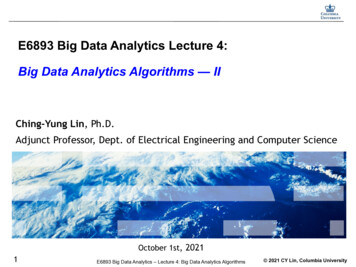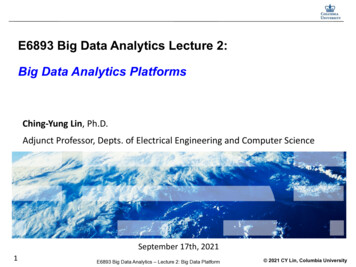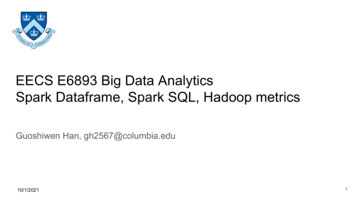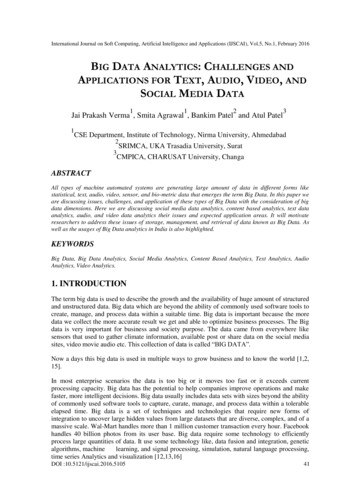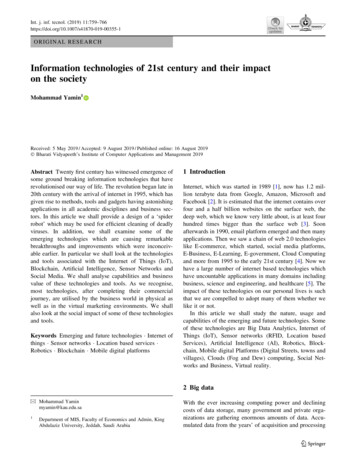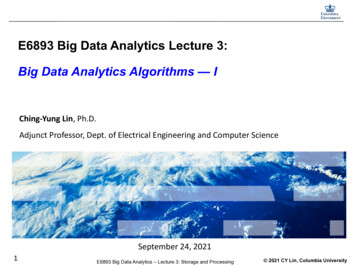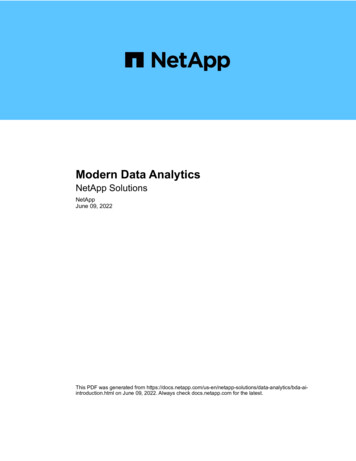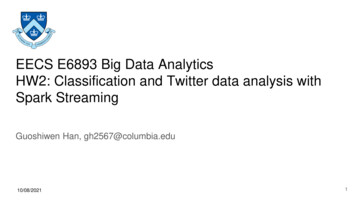
Transcription
EECS E6893 Big Data AnalyticsHW2: Classification and Twitter data analysis withSpark StreamingGuoshiwen Han, gh2567@columbia.edu10/08/20211
Agenda Binary classification with Spark MLlib Logistic Regression Twitter data analysis with Spark Streaming LDA2
Logistic Regression Logistic Function: Likelihood Function:
Spark aming-programming-guide.html
Dstream A basic abstraction provided by Spark Streaming Represents a continuous stream of data Contains a continuous series of RDDs at different time
ArchitecturerequestSparkStreamingdataSpark ataBigQueryrequestSocketdataTwitterAPI
LDA (Latent Dirichlet allocation) A topic model. A three-layer Bayesian probability model, including a three-layer structure ofwords, topics, and documents. It can be used to generate a document, and identify themes in a large-scaledocument.
LDA (Latent Dirichlet allocation)
LDA (Latent Dirichlet allocation) The left side is the word node, and the right side is the document node. Each wordnode stores some weight values to indicate which topic the word is related to; similarly,each article node stores an estimate of the topic discussed in the current article.d is the document, w is the word, z is the topic, and kis the number of topics.
HW2
HW2 Part I Binary classification with Spark MLlib Adult dataset from UCI Machine Learning Repository Given information of a person, predict if the person could earn 50k per year11
HW2 Part I Binary classification with Spark MLlib Workflow Data loading: load data into Dataframe12
HW2 Part I Binary classification with Spark MLlib Workflow Data preprocessing: Convert the categorical variables into numeric variables with ML Pipelines and Feature Transformers 13
HW2 Part I Binary classification with Spark MLlib Workflow Modelling:Logistic RegressionKNNRandom ForestNaive BayesDecision TreeGradient Boosting TreesMulti-layer perceptronLinear Support Vector test/ml-classification-regression.html14
HW2 Part I Binary classification with Spark MLlib Workflow Evaluation (Logistic Regression)15
HW2 Part I Binary classification with Spark MLlib Workflow Evaluation (Logistic Regression)16
HW2 Part II Twitter Data Analysis Calculate the accumulated hashtags count sum for 600 seconds and sort itby descending order of the count. Filter the chosen 5 words and calculate the appearance frequency of themin 60 seconds for every 60 seconds (no overlap). Save results to google BigQuery. Use LDA to do classification to your streaming, see the topic distribution.
Register on Twitter Apps (Do this cess.html
SocketUse TCP, need to provide IP and Port for client to connect
Spark StreamingCreate a local StreamingContext with twoworking thread and batch interval of 5second.Create stream from TCP socket IP localhostand Port 9001
Spark StreamingStart streaming contextStop after 600 seconds (You can set STREAMTIME to a smaller value at first)Save results to BigQuery
Start streaming1. Run twitterHTTPClient.py2. Run sparkStreaming.py3. You can test sparkStreaming.py multiple times and leavetwitterHTTPClient.py running4. Stop twitterHTTPClient.py (on job page of the cluster or use gcloudcommand)
Task1: hashtagCount
Task2: wordCount
Task3: Save resultsCreate a dataset:bq mk Dataset name Replace with your own bucket and dataset name:
Task3: Save results
Sample Results
Task4: LDA Classification Load your streaming
Task4: LDA Classification Do classification Check the weight of every topic distribution
Task4: LDA Classification Output topic and vocabulary distribution
HW2: Classification and Twitter data analysis with Spark Streaming Guoshiwen Han, gh2567@columbia.edu 10/08/2021 1. Agenda Binary classification with Spark MLlib . EECS E6893 Big Data Analytics HW3: Twitter data analysis with Spark Streaming Author: GuoshiwenHan Created Date:
